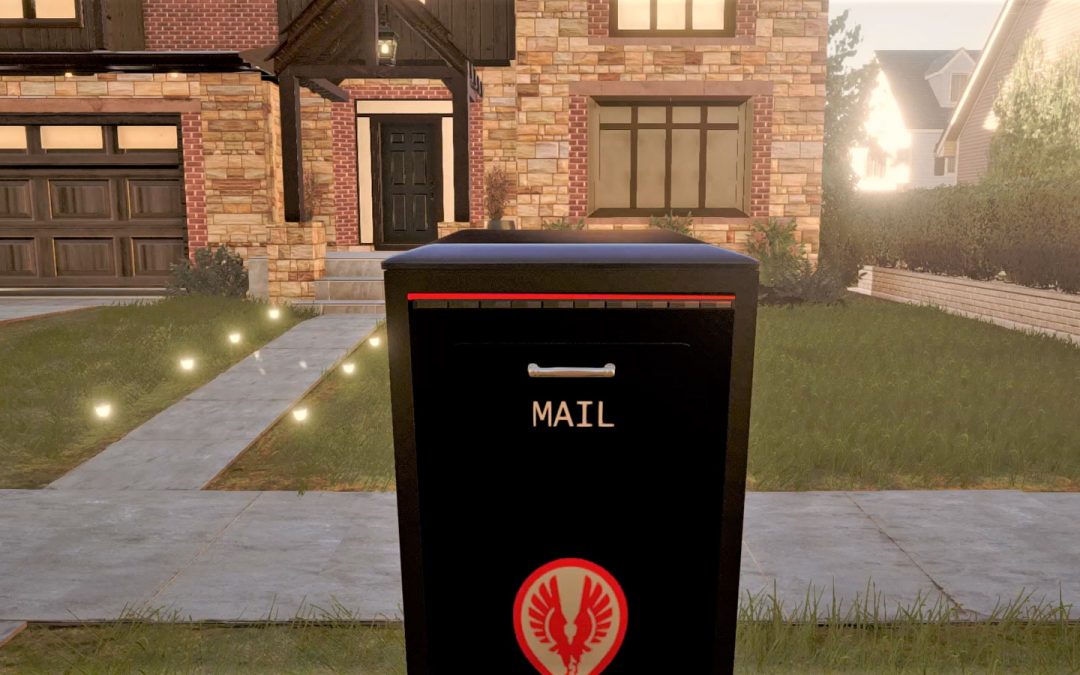Last-mile delivery is a place of explosive innovation, but DroneDek is thinking ahead to the future of the last two feet.
The company has created a smart mailbox. It’s loaded with sensors and cameras, UV lights for disinfecting packages, flashing strobes for emergency situations, as well as heating and cooling elements to maintain food or sensitive retail goods. It also has GPS and an API for drones to find and connect to the device.
As founder and CEO Dan O’Toole said, the mailbox was ripe for innovation.
“It’s the next-gen mailbox. The mailbox has not been innovated on since March 9 of 1858,” said O’Toole. “Our vision is to consolidate all delivery to a single point; robotic delivery, UAVs, aerial drones and conventional delivery.”
To be clear, it’s early days for the company and the industry. Today, just a sliver of the population has automated delivery. Similarly, the company is just starting production to send out 4,000 DroneDek boxes for pilot programs around the country.
He’s also not the only one thinking about what that last stop for automated delivery looks like.
“I learned that when one person has an idea, there’s an unwritten rule that 10 people have the same idea. That happened to me a few times,” said O’Toole. “So, when I had an idea for the next-gen mailbox, I immediately ran to the patent office. When my patents issued, it revealed I had beat Amazon by just nine days, and the USPS was working on this, too.”
For a seamless drone delivery experience, there needs to be infrastructure. Without some way to house all those drone packages, yards will be littered with Amazon goodies and package thieves will just watch the skies for their next petty crime. He has pilot programs set for tech-forward communities in Indiana, and he’s looking to expand to the limited areas that have drone delivery to really see how things will work.
“We are looking at several of those FAA test areas. We’ve been invited to participate in some of those,” said O’Toole. “It’s happening right now; there’s a half a dozen pilots with beyond visual operations and with trillion-dollar market cap companies. It’s definitely going to happen and we’re starting to deployments. In two years, it won’t be a novelty.”
He said yes, it’s early, but it’s time restaurants and retailers started thinking about the last two feet of that last mile. He’s working on the box, but said restaurants should really examine how they might operate in a drone-delivery future.
“One of the biggest things is really reinventing packaging, I don’t see a lot of people thinking about that. Drones can carry five pounds which is 90 percent of deliveries. But a 16-inch pizza box may be reimagined as two smaller boxes,” said O’Toole. “You don’t want some big unwieldy box drifting in the wind. That packaging is one of the biggest things to think about today.”
He said the company will roll out 4,000 mailboxes in the next two years, including a pilot program in Lawrence, Indiana, where the company is headquartered. He said to see the boxes out in the real world is a sea change from 2014 when he had the idea. Back then, it seemed a little more like a sci-fi daydream, demonstrating well how fast this industry has evolved.
“People thought I was a nut-job,” said O’Toole. “I like to say, if you have a futuristic idea and people don’t think you’re crazy, you’re too late.”


